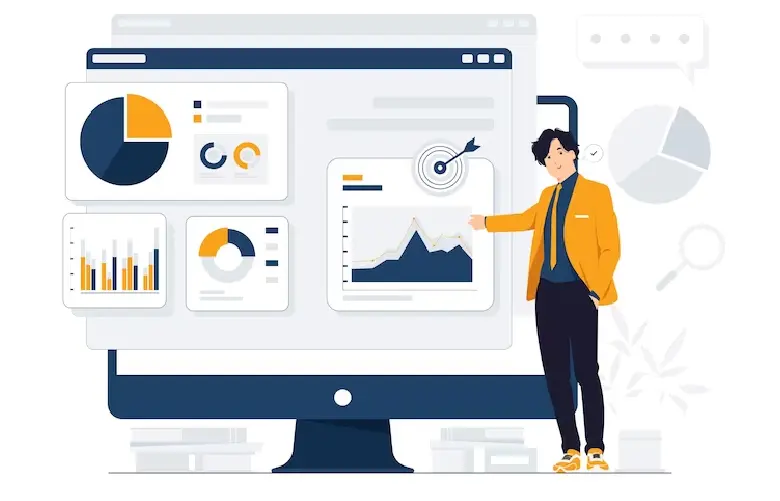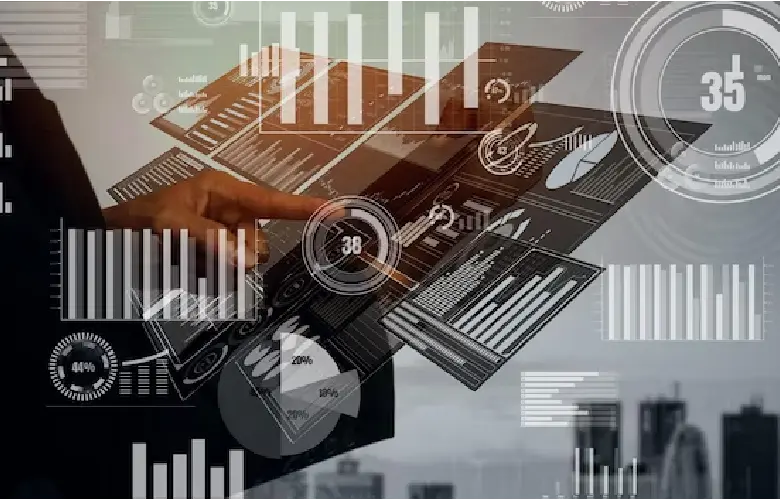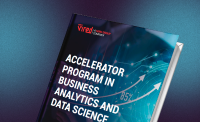Data visualization tools are software applications that allow users to create visual representations of data, such as charts, graphs, and maps. These tools make it easier to understand complex data sets by presenting the information in a more intuitive and accessible format.

Data visualization tools can be used for a variety of purposes, such as analyzing trends, identifying patterns, and communicating insights to others. They are commonly used in fields such as business, science, and academia, but can be useful in any context where data needs to be analyzed and communicated effectively. Let us dive deep and understand the major types of data visualization tools to use in 2025 and the benefits associated with the it.
There are several types of data visualization tools available, each with their own unique features and capabilities. Here are some common types of data visualization tools:

1.Pie Chart
A pie chart is useful for arranging and displaying data as a percentage of a whole. These data visualization tools use a circle to represent the whole, and slices of that circle represent the different categories comprising the whole. Pie charts are useful for comparing the relationship between different dimensions inside a specific context.
2. Tableau
Tableau is one of the best data visualization tools trusted by data scientists, analysts, and statisticians. Once you enter data in Tableau, it can produce the necessary data visualization output in a short span while offering top-notch security. Tableau can also be used for preparing, cleaning, and formatting data to receive actionable insights from it.
3. Bar Chart
A bar chart is useful for comparing numerical values like percentages and integers. These data visualization tools use the length of each bar to represent variable values. Bar charts are often used to visualize the effectiveness of different methods or strategies for achieving a goal.
4. Histogram
A histogram can graphically represent data with the help of bars of different heights. Each bar group in a histogram number into ranges. Taller bars indicate a huge amount of falls in that range. These data visualization tools can reveal the spread and shape of continuous sample data.
5. Gantt Chart
Gantt charts are data visualization tools often used in project management. They can visualize the time duration for different activities or events. These data visualization tools can make the interdependencies between tasks more visually apparent and throw light on the workflow schedule.
6. Heat Map
Heatmaps indicate trends, patterns, and relationships within the data. These data visualization tools use both color and size as preattentive attributes. It enables you to encode one measure for color and another for size.
7. Box and Whisker Plot
These data visualization tools are useful for collecting more statistical details about data. The straight lines at the maximum and minimum are referred to as whiskers. Points outside the whiskers are called an outlier.
Check out the Artificial Intelligence & ML Course from Hero Vired.
8. Waterfall Chart
Waterfall charts can show a running total as values get added or subtracted. Waterfall charts can help understand how an initial value gets affected by a series of positive or negative values.
9. Area Chart
Area charts are a type of geospatial visualization. These data visualization tools can display specific values set over a country, state, or other geographic location maps. The two common types of area charts include choropleths and isopleths.
10. Scatter Plot
Scatter plots are one of the most common data visualization tools used in data science and machine learning. Scatter plots are available in 2D and 3D formats. The 2D scatter plot is more common and is used for spotting patterns, clusters, and the separability of data.
11. Bubble Chart
Bubble charts are a variation of scatter plots. In these data visualization tools, bubbles replace data points. Moreover, an additional data dimension is represented in the size of the bubbles.
Explore: Data Warehousing and Data Mining
12. Timeline
Timeline charts are data visualization tools that represent events in a chronological sequence. These data visualization tools can display the chronological sequence of past or future events on a timescale.
13. Highlight Table
Highlight tables can enhance text tables while maintaining their form. These data visualization tools encode ranges of measure values from lowest to highest by using color as the preattentive attribute.
14. Bullet Graph
Bullet graphs are bars marked with extra codings to explain progress towards a performance or goal against a reference line. These data visualization tools replace meters and gauges found in early reports and dashboards.
15. Treemap
Treemaps are data visualization tools to display hierarchically organized data as a set of nested rectangles. In treemaps, the color and size of the rectangles depend on the values represented by the data points.
16. Word Cloud
A word cloud can visually represent the frequency of a word within a body of text. These data visualization tools are particularly useful for unstructured data to show high-frequency or low-frequency words.
Learn about the Top 13 Essential Tools for Data Engineering.
17. Network Diagram
Network diagrams are popular data visualization tools used for unstructured or semi-structured data. These data visualization tools express relationships as ties and nodes. Network diagrams are useful for analyzing social networking sites or mapping product sales across different locations.
18. Correlation Matrices
Correlation matrices are data visualization tools that show the correlation coefficients for multiple variables. The matrix can represent the correlation between all the possible pairs of values inside a table. The data visualization tools are extremely effective for summarizing large data sets.










